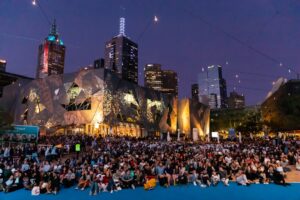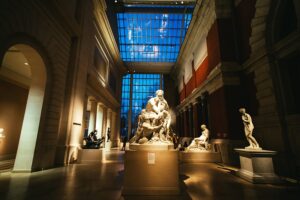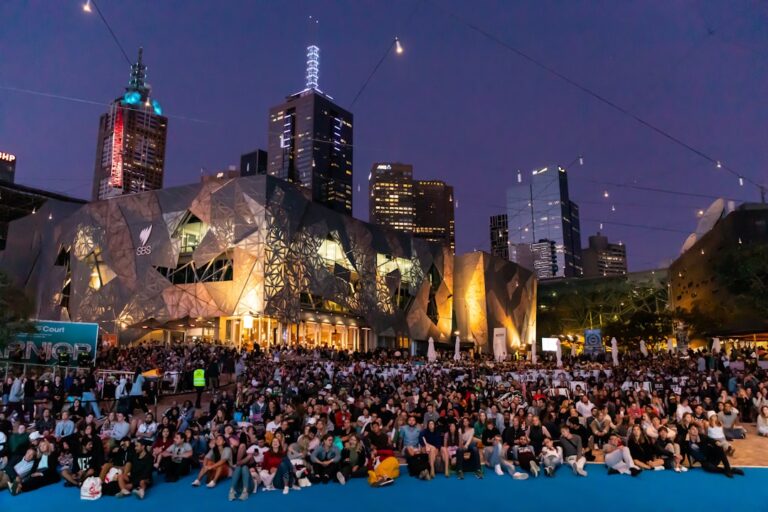The 1950s marked a pivotal decade in the evolution of literature, characterized by a rich tapestry of cultural shifts and societal transformations. Following the tumultuous years of World War II, writers began to explore themes that reflected the complexities of a rapidly changing world. The post-war era was not merely a time of recovery; it was also a period of introspection and reevaluation of values, beliefs, and identities.
The literary landscape of the 1950s was shaped by a confluence of factors, including the rise of consumerism, the Cold War tensions, and the burgeoning civil rights movement. These elements coalesced to create a fertile ground for innovative storytelling and diverse narrative forms. In this decade, literature became a mirror reflecting the anxieties and aspirations of society.
The emergence of new voices and styles signaled a departure from the traditional narrative forms that had dominated earlier periods. Writers began to experiment with stream-of-consciousness techniques, fragmented narratives, and unreliable narrators, all of which contributed to a more nuanced exploration of human experience. The 1950s also saw the rise of the Beat Generation, which challenged conventional norms and celebrated spontaneity and individualism.
This era was not just about the written word; it was a time when literature intersected with other art forms, including music and visual arts, creating a vibrant cultural milieu that would influence generations to come.
Key Takeaways
- The 1950s literary landscape was characterized by a shift towards realism and existentialism, reflecting the post-war disillusionment and anxiety.
- Emerging themes and styles in 1950s novels included alienation, conformity, and the search for meaning in a rapidly changing world.
- Notable novelists of the 1950s, such as J.D. Salinger, Jack Kerouac, and Flannery O’Connor, made significant contributions to literature with their exploration of the human condition and societal norms.
- The impact of 1950s novelists on literature and society was profound, as their works challenged traditional values and paved the way for the countercultural movements of the 1960s.
- The enduring legacy of 1950s novelists can be seen in their continued influence on contemporary literature and their ability to resonate with readers across generations.
Emerging themes and styles in 1950s novels
Alienation and Existential Angst
One prominent theme was the exploration of alienation and existential angst. Many authors delved into the psychological struggles of their characters, reflecting a sense of disconnection from society and an ongoing search for meaning in an increasingly mechanized world. This theme was particularly evident in works like J.D. Salinger’s “The Catcher in the Rye,” where the protagonist Holden Caulfield embodies the feelings of isolation and disillusionment that many young people experienced during this era.
Questioning the American Dream
Another significant theme was the critique of consumerism and materialism that characterized post-war America. Writers began to question the notion of the American Dream, highlighting the emptiness that often accompanied the pursuit of wealth and status. In John Updike’s “Rabbit, Run,” for instance, the protagonist Rabbit Angstrom grapples with his own desires and societal expectations, ultimately revealing the hollowness behind the façade of suburban life. This critical examination of consumer culture was not limited to fiction; it permeated poetry and essays as well, as authors sought to articulate their concerns about the moral implications of a society driven by consumption.
Experimentation in Form and Style
Stylistically, the 1950s witnessed a departure from linear storytelling and traditional narrative structures. Authors began to embrace experimental forms that reflected the complexities of modern life. The use of stream-of-consciousness techniques allowed writers to delve into the inner workings of their characters’ minds, creating a more intimate connection between reader and text. This approach can be seen in works like William Faulkner’s “A Fable,” where fragmented narratives challenge readers to piece together meaning from disjointed thoughts and experiences. The blending of genres also became more prevalent, as writers incorporated elements of science fiction, fantasy, and magical realism into their narratives, further expanding the boundaries of literary expression.
Notable novelists of the 1950s and their contributions

The 1950s produced a remarkable array of novelists whose contributions significantly shaped the literary landscape. Among them was J.D. Salinger, whose “The Catcher in the Rye” became an iconic representation of adolescent angst and rebellion.
His exploration of themes such as innocence, identity, and the complexities of human relationships established him as a voice for disenchanted youth. Another influential figure was Ray Bradbury, whose works often blended elements of science fiction with profound social commentary.
In “Fahrenheit 451,” Bradbury presented a dystopian vision of a future where books are banned, serving as a cautionary tale about censorship and the dangers of an unthinking society. His ability to weave imaginative narratives with pressing societal issues made him a key player in shaping public discourse around freedom of expression and intellectual curiosity. Additionally, John Updike emerged as a significant voice in American literature during this decade.
His “Rabbit” series explored the intricacies of suburban life and the struggles faced by its inhabitants. Updike’s keen observations on marriage, fidelity, and personal fulfillment provided readers with an unflinching look at the complexities of modern existence. His prose was marked by its lyrical quality and attention to detail, allowing readers to engage deeply with his characters’ inner lives.
The impact of 1950s novelists on literature and society
The impact of 1950s novelists extended far beyond their immediate literary contributions; they played a crucial role in shaping societal attitudes and cultural conversations. By addressing themes such as alienation, consumerism, and identity crises, these writers challenged readers to confront uncomfortable truths about their own lives and society at large. Their works often served as catalysts for discussions around conformity versus individuality, prompting readers to reflect on their values and beliefs.
Moreover, these novelists influenced subsequent generations of writers who sought to build upon or respond to their themes and styles. The experimentation with narrative forms pioneered by authors like Salinger and Faulkner paved the way for later movements such as postmodernism, which further deconstructed traditional storytelling techniques. The legacy of these writers can be seen in contemporary literature that continues to grapple with similar existential questions while employing innovative narrative strategies.
In addition to their literary influence, 1950s novelists also contributed to broader social movements. For instance, their critiques of consumer culture resonated with emerging countercultural movements that sought to challenge societal norms. The Beat Generation’s embrace of spontaneity and nonconformity found inspiration in the works of authors like Jack Kerouac and Allen Ginsberg, who pushed against the boundaries established by mainstream literature.
This interplay between literature and social change underscored the power of storytelling as a means to inspire action and provoke thought.
The enduring legacy of 1950s novelists
The legacy of 1950s novelists is evident not only in their immediate impact on literature but also in their lasting influence on cultural discourse. Their exploration of complex themes continues to resonate with readers today, as many of the issues they addressed remain relevant in contemporary society. The struggles with identity, alienation, and societal expectations that characterized their works are echoed in modern literature, film, and art.
Furthermore, these authors laid the groundwork for future literary movements that would emerge in subsequent decades. The experimentation with narrative structure and style initiated by 1950s writers paved the way for postmodernism’s embrace of fragmentation and metafiction. Contemporary authors often draw upon the techniques established during this era while infusing them with new perspectives that reflect current societal challenges.
The cultural conversations sparked by these novelists have also endured over time. Their critiques of consumerism have found renewed relevance in today’s discussions about sustainability, mental health, and social justice. As society grapples with issues such as climate change and economic inequality, the insights offered by 1950s writers serve as valuable touchstones for understanding our present circumstances.
1950s novelists and their relevance today

The literary contributions of the 1950s remain profoundly relevant in today’s world, as they continue to inspire readers and writers alike.
As we confront our own societal challenges, the insights gleaned from these works provide valuable perspectives on human experience.
Moreover, the stylistic innovations introduced during this decade have left an indelible mark on literature. The willingness to experiment with form and content has encouraged subsequent generations to push boundaries and explore new narrative possibilities. In an age where storytelling is more diverse than ever before, the legacy of 1950s novelists serves as both inspiration and foundation for ongoing literary exploration.
In essence, the writers of the 1950s not only shaped their own era but also laid the groundwork for future literary endeavors that continue to engage with pressing social issues. Their works invite us to reflect on our own lives while challenging us to consider how we might navigate an ever-evolving world. As we delve into their stories today, we find echoes of our own struggles and aspirations—reminders that literature remains a powerful tool for understanding ourselves and our place within society.
If you’re interested in exploring philosophical ideas that challenge traditional beliefs, you may enjoy reading about Sartre’s concept of existence preceding essence. This article delves into how Sartre’s ideas embrace individual freedom and challenge traditional philosophical notions. Check it out here.























+ There are no comments
Add yours